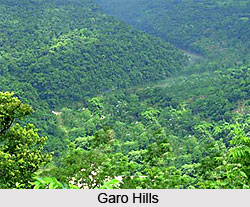 Garo language is one of the popular languages of India. It is spoken by majority of the people residing in Garo Hills in the state of Meghalaya. Garo language is also popular in several districts of the state of Assam like Dhubri, Goalpara, Kamrup, and the Darrang. This popular tribal language is also spoken in the neighbouring country of Bangladesh. Garo language uses Latin alphabet. This language also has a close association with Bodo language, the language is spoken by the Bodo tribal community, which is one of the most prominent communities of the Indian state of Assam. Garo language belongs to the Tibeto Burman language family.
Garo language is one of the popular languages of India. It is spoken by majority of the people residing in Garo Hills in the state of Meghalaya. Garo language is also popular in several districts of the state of Assam like Dhubri, Goalpara, Kamrup, and the Darrang. This popular tribal language is also spoken in the neighbouring country of Bangladesh. Garo language uses Latin alphabet. This language also has a close association with Bodo language, the language is spoken by the Bodo tribal community, which is one of the most prominent communities of the Indian state of Assam. Garo language belongs to the Tibeto Burman language family.
The main dialects of Garo language comprise A`beng, A`chick, A`we, Chisak, Kamrup, Matchi, Dacca, Ganching. The Achik dialect prevails among various essentially intelligible dialects. The Abeng dialect is mainly prominent in Bangladesh and it is nearby to Koch. In India, Garo speakers account for a huge number of percentages in terms of population. Except for the dialects A`tong and Ruga, the other dialects that are spoken by Garo tribe are reciprocally understandable. Garo tribal language does not comprise any tones. Interestingly, the syllable structure of this language is very similar to that of other Asian tone language. Syllable boundaries in Garo language are phonologically very sharp except in the borrowed words.
Department of Garo was founded by popular demand in the year 1996 at the commencement of North Eastern Hill University. A Garo sentence at its simplest needs a verb base as well as a tense suffix. However, optionally, one or more nouns or noun phrases, pronouns as well as adverbs can lead the verb. With the aid of supplementary affixes, the verb can itself be made a little bit complex. Sentences in Garo language need only a verb. This tribal language has no possible hint of any verb agreement. In this language, nouns, noun phrases, pronouns as well as adverbs are frequently used to make the meaning of a single sentence clear. Garo language, just like most of the other languages of the Tibeto-Burman language family, is an SOV language.
Garo language has a huge class of adverbs and most of them are reduplicative or partially reduplicative, which take no affixes. On the western, northern and the southern borders of the country, Garo tribal people speak either Bengali language or closely connected dialect of Assamese language. The influence of Bengali language is generally strong among the Gar tribal community of Bangladesh as in this country, the mode of all primary education is Bengali. The impact of Bengali as well as English language over Garo language generally comes with the borrowed words.



















